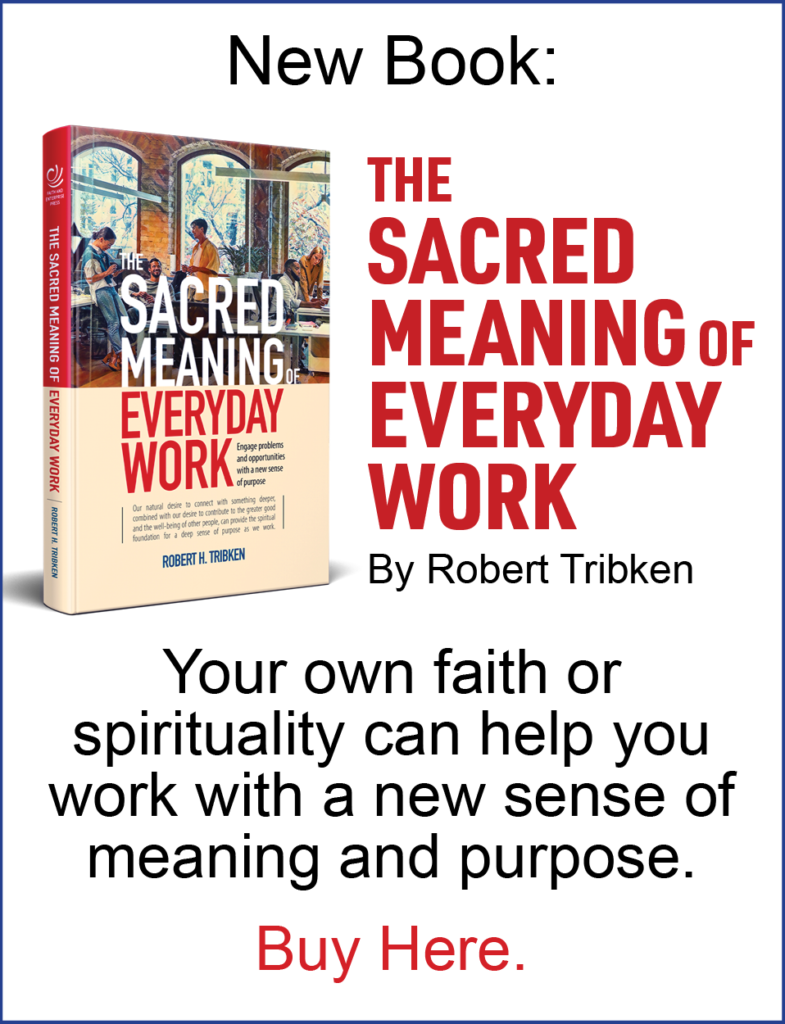In her “Paul Henley Furfey” lecture at the annual Association for the Sociology of Religion meeting, Nancy Ammerman offered ideas about how sociologists might find religion in daily life, including the workplace.
Defining “Lived Religion”
Ammerman’s subject is “lived religion,” which she calls the “embodied and enacted forms of spirituality that occur in everyday life,” including the workplace. Lived religion includes beliefs and religious membership, but the term goes well beyond these to include everyday practice. It can also apply to the workplace.
Lived religion can be found within a full range of predominantly secular domains, intermingled with the ordinary:
Just as our research project found that most of life is pretty ordinary, we also found that no social domain is always and utterly devoid of spiritual meaning.
Religion and spirituality helped individuals find meaning throughout their daily lives:
Looked at from one angle, what we found in stories of everyday life was that individuals were cultivating a religious consciousness and weaving a layer of spirituality into the fabric of their individual lives, a warp and woof that extend far beyond the institutional domain designated as “religious”.
Religion and the Workplace: A Social Process
This intermingling of the sacred and the profane frequently occurs during conversation; conversations in the workplace can sometimes be imbued with religious or spiritual significance.
This is especially likely for people who are already religiously committed; individuals are more likely to engage in spiritually significant workplace conversations if their religion has a high degree of salience, if they engage in spiritual practices, and if they attend a church or other religious entity.
These conversations are most likely to take place, and have a higher degree of religious significance, among people who believe they have a similar religious perspective:
People who perceive each other as spiritually similar were more likely to report having conversations about religious and spiritual topics, and people who have such conversations were more likely to see religious and spiritual dimensions in their working lives. That is, people find each other, they talk, and out of that conversation religious realities are created.
Churches’ Role In Daily Spirituality
Churches and other religious institutions can play an important role. According to Ammerman, they can help us develop a language for our spirituality (including, in my view, our spiritual intuitions and experiences), bring the sacred forward in our consciousness, and start conversation threads that can carry over into our daily lives:
. . .the more deeply embedded people are in these organized sites of spiritually infused conversation, the more likely they are to carry strands of that conversation with them. It is not that they have learned a set of doctrines or subscribed to a set of behavioral prescriptions. It is that they have learned to “speak religion” as one of their dialects.
If people do not have a place where they can regularly engage in spiritual discourse and learn a spiritual language, they are less likely to bring these into their understanding of their work lives.
Workplace Implications
It seems evident that Ammerman’s lecture and work have significant implications for the workplace.
One implication is that in the workplace, and elsewhere, the right conversations can help us connect our work with our faith, helping us find more meaning in both. Our individual insights and perspectives are important; engaging in conversations gives us more opportunities to develop and apply them, potentially enriching the integration of our work and faith.
Another implication concerns how broadly we define our shared perspective. If we limit our willingness to share perspectives to those who use the particular language and doctrines of our particular church, there will probably be relatively few people with whom we can have spirituality-tinged conversation in the workplace. On the other hand, if we acknowledge that we all stand before the great mystery of God, and if we are open to differing attempts to deal with this mystery, we will likely find that we can expand the range of people we can engage with.
Religious institutions are essential for the reasons Ammerman sites. I believe churches could play a more valuable role if they could learn to express more appreciation for people’s work lives. They could also use language and stories to help people see sacred connections in their work and workplace relationships. This would make it easier and more natural for people to extend the conversation threads and theological perspectives into the workplace.
(Nancy Ammerman’s lecture material was based on her “Spiritual Narratives in Everday Life” project, which recorded and analyzed interviews with several hundred people and was funded by the John Templeton Foundation. The lecture was published in the Summer, 2014, issue of The Sociology of Religion, published by Oxford University Press. Unfortunately, it is behind a paywall, but her most recent book, Sacred Stories, Spiritual Tribes: Finding Religion in Everyday Life, also includes material from the project.)


